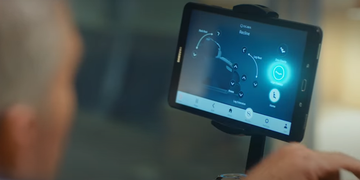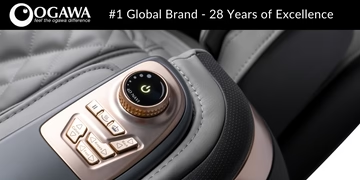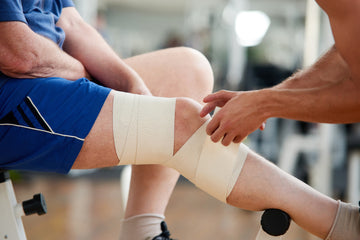There’s no doubt that getting a massage feels good, physically, but are you aware of some of the reasons why you feel so much better afterward? While there’s a lot of debate in the verbiage surrounding how massage releases toxins from the body, the fact is it can help release these from inside and around the muscles, filtering them through the body and expelling them.
Today, we’re looking at what toxins are released after massage, how they’re filtered out, and simple post-massage care instructions that are important to getting the most from each session.
HOW MASSAGE RELEASES TOXINS
Before we hop into looking at what toxins are released after massage, let’s discuss how massage releases toxins and what that really means. While the word “toxin” may conjure up all kinds of images of toxic waste or runoff, that’s not really what’s happening here. While getting a massage may help improve your health, including stimulating and building a strong immune system to keep you healthy, the toxins massage releases won’t make you sick, themselves.
Instead, massage releases toxins by stimulating the muscles and lymph nodes around the body to release built-up toxins that may have settled within and works to filter them through the body and expel them. Some of the most common types of massage considered when thinking about what toxins are released during massage are:
- Swedish massage
- Deep tissue massage
- Lymphatic drainage massage
While all types of massage work to stimulate muscles, these three are the most popular when it comes to discussing how massage releases toxins and helps you feel better.
Whether you opt for regular massage appointments or turn to the benefits of owning a massage chair for home use whenever you’d like, you may have experienced “flu-like” symptoms for a short while after a massage before. No, you’re not actually getting sick. Instead, your immune system has been stimulated and is working alongside other bodily functions to expel those wastes from your body. This filtration and ultimate excretion from the body is what may help your body heal more quickly, feel more relaxed, and even boost energy levels.
WHAT TOXINS ARE RELEASED DURING MASSAGE?
Now that we’ve discussed how massage releases toxins, the next thought many people have is on what toxins are released after massage (or during, as it were). It’s important to denote that massage isn’t physically removing these toxins from the body at the time of your session, so much as massage stimulates the body to release these toxins from where they’ve built up and then filters them to excrete them in various ways.
So, what toxins are released after massage, then? The metabolites you’re most likely to hear about benign released during and after massage are:
- Uric acid
- Lactic acid
- Creatine and creatinine
Uric Acid
Uric acid is a catabolic waste product found in the blood as the body breaks down chemicals called purines. High levels of uric acid in your body can cause crystals of uric acid to form, leading to health conditions like gout.
When exploring what toxins are released after massage, you’ll learn how massage stimulates blood flow, which in turn helps alleviate inflammation and swelling throughout the body that can be caused by elevated levels of uric acid. The enhanced blood flow along with stimulated metabolism massage may provide the body uric acid to dissolve and be filtered through the kidneys for excretion.
Lactic Acid
Lactic acid is a metabolic acid produced when the body breaks glucose (sugar) down to generate cellular energy (commonly referred to as ATP). When we perform physical activities like playing sports or working out, the burn you may feel is a build-up of lactic acid (also called lactate). A build-up of lactate may irritate the muscles and lead to muscle soreness if left unchecked.
The effectiveness of massage for sports recovery (and recovery from any physical activity) lies in the enhanced filtration of lactic acid from the body. By stimulating the muscles, any build-up of lactic acid that may have formed in or around the tissue is drawn out and moved through the body for excretion. This process is what contributes to the benefits of massage for muscle soreness and recovery.
Creatine and Creatinine
While not a toxin, per se, creatine is a substance naturally found in muscle cells that helps you produce energy during high-intensity exercise or physical activity like heavy lifting. A natural byproduct of muscle use and strain, creatinine is a biological waste formed by the metabolism of creatine. This substance is filtered through the kidneys and ultimately expelled from the body in urine.
Part of what toxins are released after massage, creatinine levels decrease as the blood flow increases, reducing stress on the kidneys, which require adequate blood flow to help filter waste products and remove excess fluids.
Proper Post-Massage Care
Now that you’ve got an idea of what toxins are released after massage (and how), it’s important to be aware of proper post-massage care instructions to help your body filter these toxins and expel them. Regardless of whether you’ve made a massage appointment or you use a massage chair at home, the aftercare instructions are the same.
Since most will be filtered out through the kidneys and ultimately expelled through urine, the most important post-massage care instruction is to drink water. Staying hydrated is essential to reduce the build-up of toxins within the body as well as filtering them out of the body after a massage. Drinking water immediately after a massage will help remove any metabolic wastes that were drawn out while your muscles were being worked on.
You should also avoid working out immediately after a massage. This is especially true after a deep tissue massage where it’s normal for the movements from your massage chair session to have resulted in micro-tears to fibers of the muscles that need time to recover. If you feel tight after a massage you may do some light stretching to loosen up. This can help you make the most of deep tissue massage benefits and keep your body in top shape
Eating a light snack or meal after a massage may also help re-energize your body. The stimulation from massage not only improves blood flow but also positively impacts your digestion. A small snack or meal like fruit, nuts, or anti-inflammatory foods like broccoli can help continue the work your massage began to expel toxins from the body.
Finally, make sure you get plenty of rest after a massage in order to make the most of your session. Resting and relaxing helps you avoid stress and gives your body time to recover. This is what makes owning a massage chair appealing to so many people, as you can avoid unnecessary stressors like traffic or having to sit uncomfortably in the car for a long drive home. Instead, you can sit back and relax without having to leave the comfort of home!
We hope this guide has given you better insight into what toxins are released after massage and how. Getting a massage is much more than a vanity exercise. It can help improve your mental and physical health, leaving you ready to take on each day. From muscle relaxation and re-energizing your body to how massage releases toxins to keep you feeling your best, there’s nothing like a good massage to enhance your lifestyle.
Curious about owning a massage chair for use at home whenever you’d like? Check out the Ogawa Active L Plus Massage Chair to combine smooth massage with the comfort of air compression, heat therapy, zero gravity reclining, and more.





